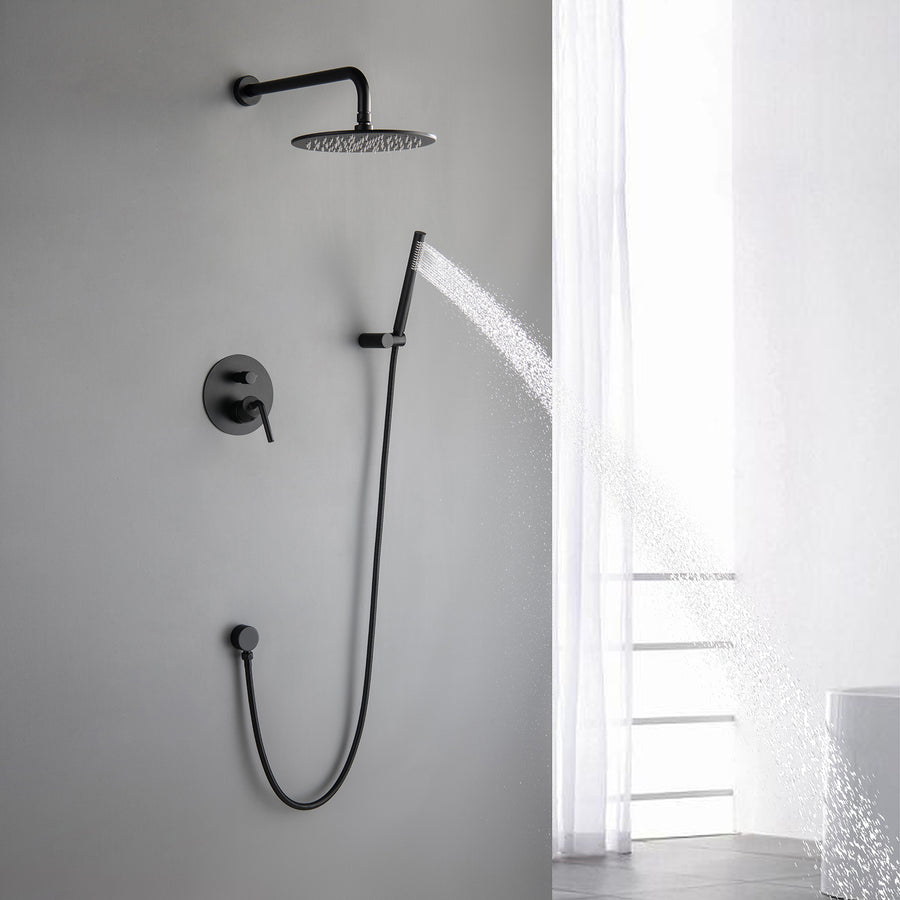I. Introduction
A. Brief overview of the importance of water efficiency in modern homes Water efficiency has become a crucial consideration in contemporary living, with a growing emphasis on sustainable practices. As individuals, we are increasingly aware of our environmental impact, prompting a shift towards eco-friendly choices.
B. Introducing the focus on water-efficient shower faucets In this context, our exploration today centers around a pivotal element of our daily routine – the shower faucet. Specifically, we'll delve into the realm of water-efficient shower faucets and their role in promoting sustainable water usage.
C. The environmental impact of water usage in bathrooms Bathrooms are notorious water consumers. From showers to faucets, our daily rituals contribute significantly to water consumption. Acknowledging this impact underscores the need for eco-conscious choices, making water-efficient shower faucets an important consideration.

II. Understanding Water-Efficient Shower Faucets
A. Definition and characteristics of water-efficient shower faucets Water-efficient shower faucets are fixtures designed to minimize water consumption without compromising functionality. They often incorporate features such as low flow rates, aerators, and advanced technologies to achieve optimal efficiency.
B. How water efficiency is measured in faucets (gallons per minute, GPM) The efficiency of shower faucets is quantified through Gallons Per Minute (GPM). Lower GPM values indicate reduced water usage. Understanding this metric empowers consumers to make informed choices aligned with their conservation goals.
C. The benefits of choosing water-efficient options Opting for water-efficient shower faucets yields several advantages. From reducing water bills to contributing to broader environmental conservation efforts, these fixtures align with both individual cost-effectiveness and global sustainability goals.

III. Environmental Impact
A. Exploring the environmental impact of traditional shower faucets Traditional shower faucets, characterized by higher water consumption, play a significant role in the depletion of water resources and contribute to increased energy usage in water treatment and delivery systems.
B. Discussing the importance of water conservation in homes Understanding the broader importance of water conservation establishes a foundation for appreciating the significance of making conscious choices, starting with fixtures like shower faucets, to address the global challenge of water scarcity.
C. How water-efficient faucets contribute to reducing water consumption Water-efficient faucets directly address the environmental impact of traditional counterparts by minimizing water usage. They align with global sustainability initiatives, contributing to the reduction of water stress and promoting responsible water management.

IV. Types of Water-Efficient Shower Faucets
A. Different types and designs available in the market The market offers a diverse array of water-efficient shower faucets, ranging from traditional to modern designs. Understanding the options available empowers consumers to choose fixtures that not only conserve water but also complement their aesthetic preferences.
B. Features of water-efficient shower faucets (aerators, flow restrictors, etc.) Water-efficient shower faucets integrate features like aerators and flow restrictors. These components enhance efficiency by maintaining water pressure while reducing overall consumption. Exploring these features sheds light on the mechanics behind water conservation.
C. Comparing traditional faucets with water-efficient options A comparative analysis between traditional and water-efficient faucets elucidates the advantages of the latter. Beyond water conservation, considerations such as functionality, aesthetics, and long-term cost savings play a role in guiding consumers towards informed choices.
These sections set the foundation for a comprehensive exploration of water-efficient shower faucets, covering the importance of water efficiency, the environmental impact of traditional fixtures, and the diverse options available in the market.
V. Choosing the Right Water-Efficient Faucet for Your Bathroom
Selecting a water-efficient shower faucet involves a thoughtful consideration of various factors. Beyond efficiency, factors such as design, functionality, and compatibility with your bathroom setup play crucial roles. By tailoring your choice to personal preferences, you not only embrace water efficiency but also enhance the overall aesthetic and functionality of your bathroom space. When it comes to installation, practical tips and guidance on compatibility ensure a smooth transition to water-efficient fixtures, making the adoption process seamless and rewarding. Explore reputable brands and specific models known for water efficiency to make an informed decision backed by real-world performance and positive user experiences.
VI. User Experience and Performance
Addressing common misconceptions about water-efficient faucets is essential in fostering a positive mindset. By dispelling myths, users can approach these fixtures with accurate expectations, understanding that water efficiency doesn't equate to a compromise in performance. Real-world experiences and testimonials further validate the practical benefits of water-efficient faucets. Positive feedback not only reassures users but also inspires confidence in the effectiveness of these fixtures. Additionally, debunking any lingering myths solidifies the understanding that water-efficient faucets can seamlessly integrate into your daily life, offering both efficiency and performance.
VII. Case Studies
Real-life examples serve as powerful illustrations of the tangible benefits of water-efficient faucets. Success stories from homes or businesses that have embraced these fixtures showcase reduced water bills and positive environmental impacts. Comparisons of water consumption before and after installing water-efficient faucets provide quantifiable evidence of the positive change brought about by these eco-conscious choices. The broader positive environmental impact further reinforces the notion that individual choices can indeed contribute to a more sustainable future.
VIII. Tips for Maintaining Water-Efficient Shower Faucets
Ensuring the longevity of water-efficient shower faucets involves proper cleaning and care. Practical tips on maintaining cleanliness and hygiene contribute to optimal performance. Troubleshooting common issues related to water-efficient faucets empowers users to address potential challenges, promoting a positive user experience. Encouraging regular maintenance becomes key in sustaining optimal performance over time. By adopting a proactive approach, users can ensure that their water-efficient faucets continue to operate efficiently, delivering both environmental and personal benefits.
IX. Conclusion
In recapitulating the benefits, we emphasize the positive outcomes associated with water-efficient shower faucets. From cost savings to environmental conservation, users are reminded of the advantages of their eco-friendly choice. Connecting this discussion to broader sustainability goals highlights the role of individual choices in contributing to eco-friendly living. In conclusion, readers are encouraged to make informed choices for a greener bathroom. Providing additional resources ensures that those interested in further exploration can access valuable information to guide their eco-conscious decisions.

































